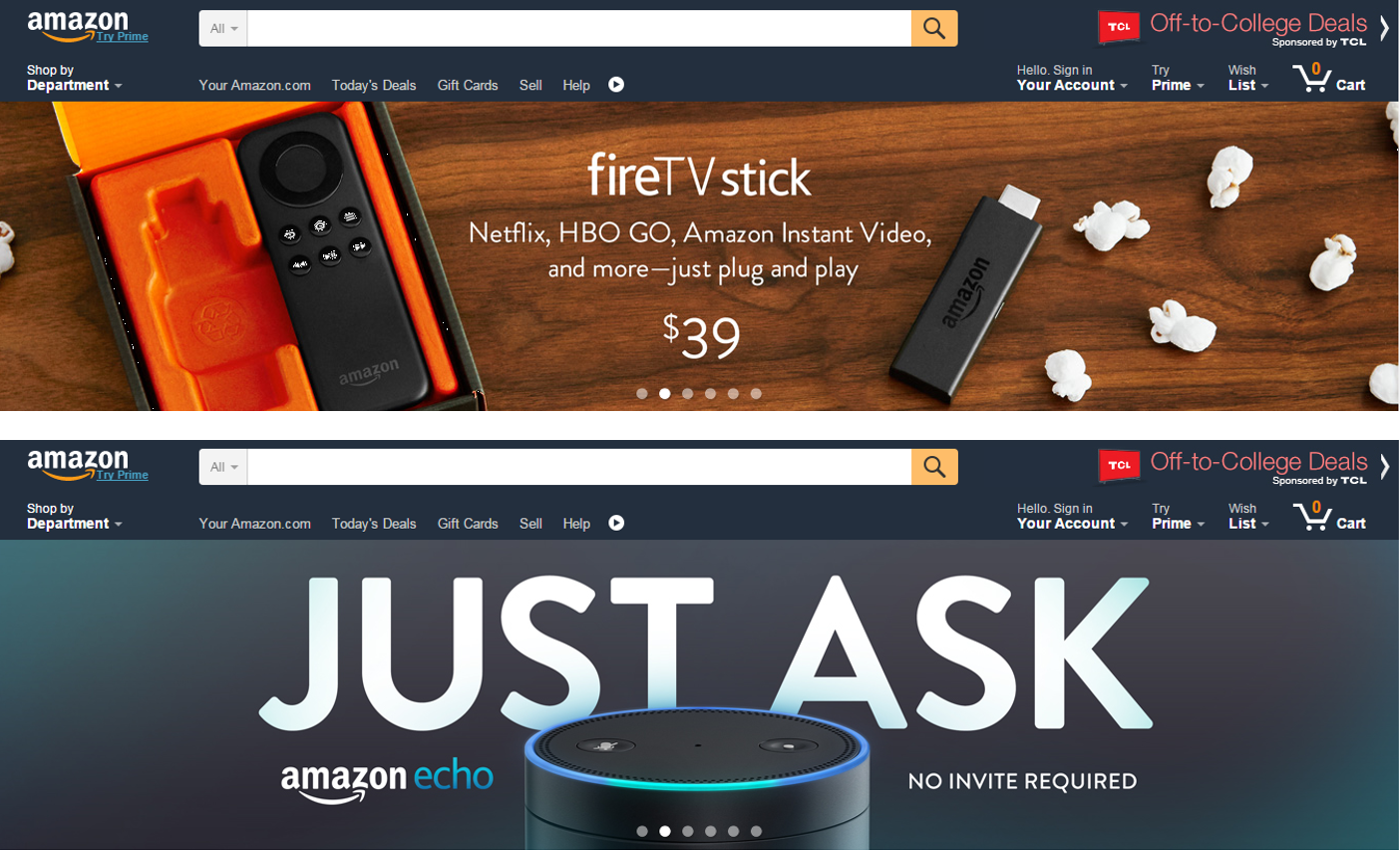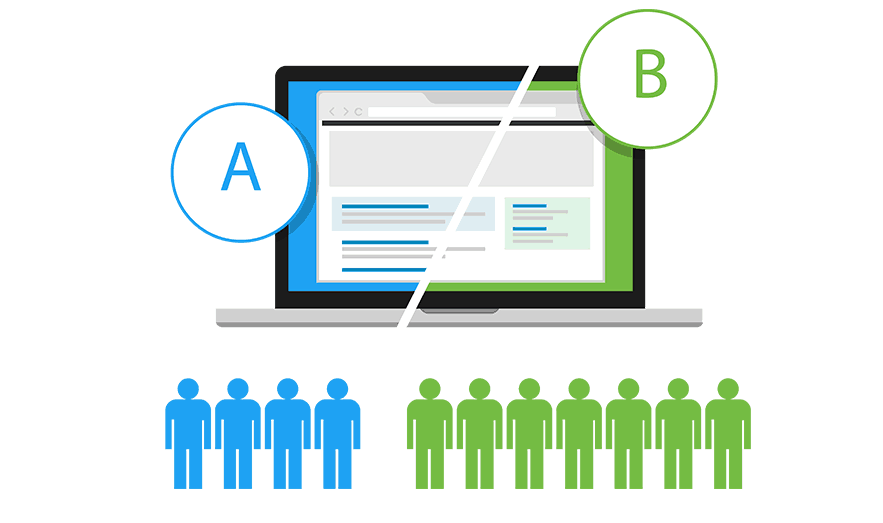What is Product A/B testing?
In simple terms, it is an experimental method that compares two variants – A and B – with the objective of determining which variants produces the best results.
Also known as split testing, A/B tests consist of dividing an audience into two or more groups (depending on how many variants are being compared) and presenting each group with versions of the same impulse or content. The difference between the versions usually lies in one variable, which allows the tester to isolate the cause of the difference in results.
The image below shows an example of an A/B test ran by Amazon on the day that this post was written. The sole difference between the two versions of the homepage presented is the second image of the carousel.


